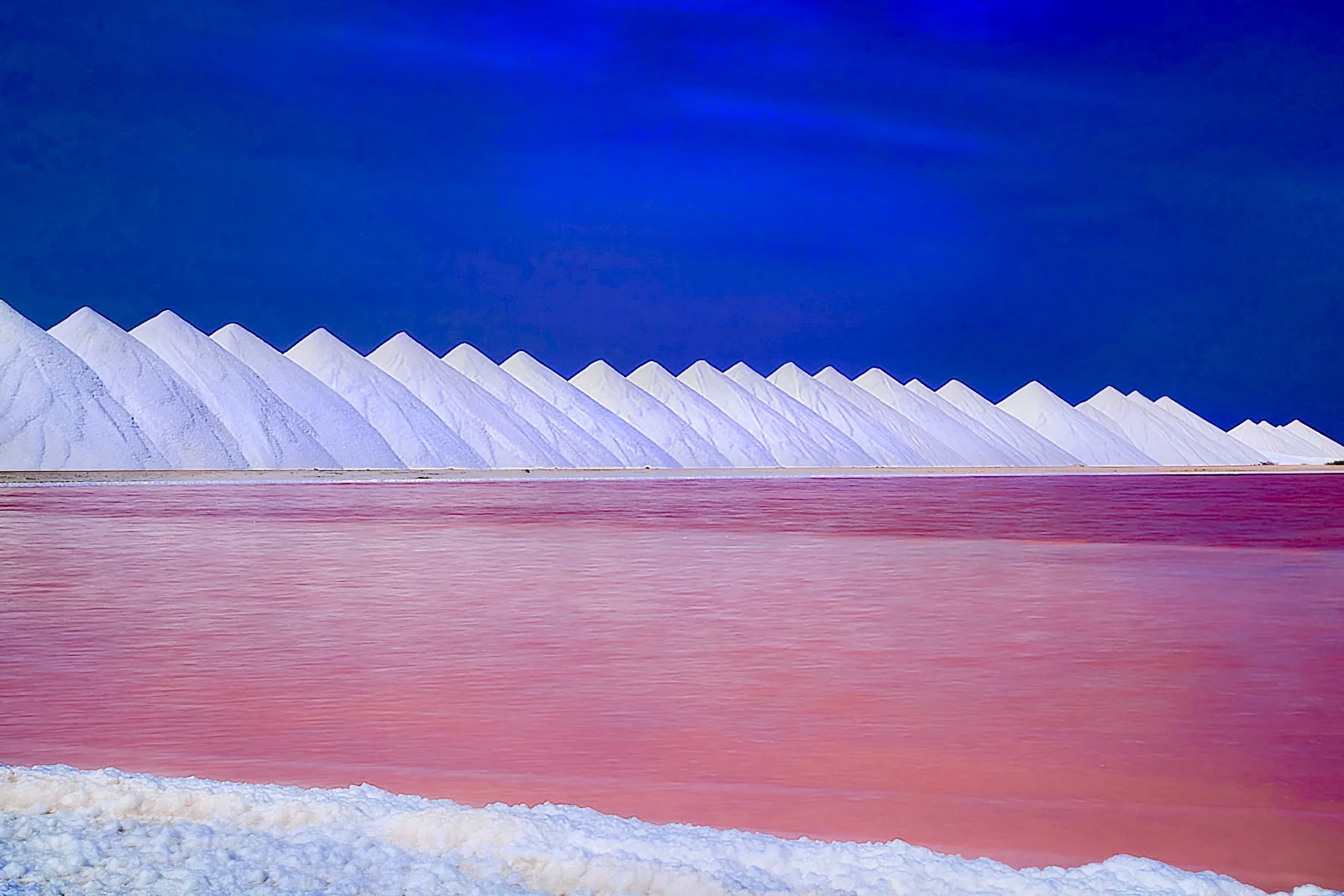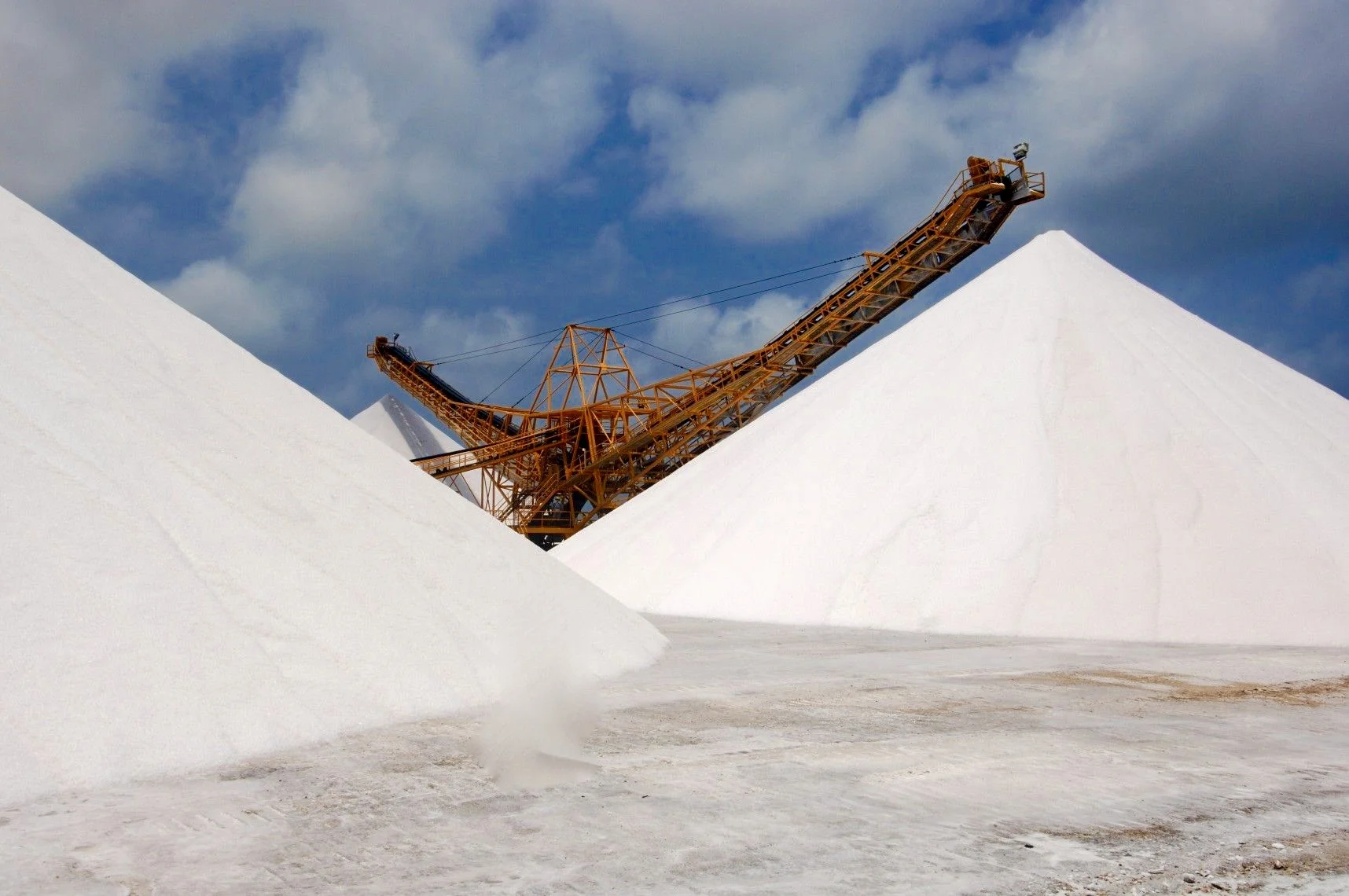THE SALT Pyramids of Bonaire
One of the most notable features that greet arriving visitors, both by sea and by air, are a distinctive line of white salt pyramids at the southeastern end of the island. Each pyramid, roughly 50-feet high, contains approximately 10,000 metric tons of 99.6% pure salt. Depending on the time of the year, there can be upwards of 200,000 metric tons of salt neatly stacked in long rows awaiting shipment.
The solar salt facility, one of the largest in the Caribbean, is today owned by Cargill, the Minneapolis, Minnesota based private company. The facility covers approximately 13 percent of the island, about 16 square miles of land, on the flat, southeast corner. The entire location is only a few feet above sea level.
The operation utilizes a series of 250-acre condenser ponds. Saltwater drawn directly from the Caribbean, at around 3.5 percent salinity, or from the adjoining brine lake, the Pekelmeer (Dutch for brine lake), at five percent salinity, moves through a succession of condenser ponds where the salinity of the brine is successively increased as the unrelenting sun and wind steadily evaporate the water.
When the brine reaches between 25 percent and 30 percent salinity it is moved into crystallizer ponds. As the evaporation of water increases the salinity beyond 37 percent the salt begins to crystallize and precipitate out of the brine solution. In these ponds we see the unique pink color which is caused by a microorganism called halophilic bacteria, which flourish in high salinity brine and in reality are not bacteria at all but a single cell life-form. The cell membranes contain carotenoid pigments which give the crystallizers the pink-red color.
Salt Pans of Bonaire
The dark color increases the absorption of sunlight which increases the temperature which in turn increase evaporation and salt production. Eventually it will form an 8 to 10 inch layer of essentially pure salt. The entire process takes 10 to 12 months, depending on the prevailing temperature and wind, as well as the precipitation and the degree to which dust and other contaminants in the air provide the nuclei that spur the crystallization of the salt.
Once harvested, the salt is washed in sea water to eliminate the small quantities of calcium sulfate dihydrate, common gypsum, which is mixed in with the salt. The washed salt is then stacked into Bonaire’s iconic and unmistakable salt pyramids. This facility can produce between 300,000 and 500,000 metric tons of salt annually. It is exported all over the world in roughly equal portions to Europe, Asia and North America.
One of the characteristic features of salt produced by solar dehydration is the size of the resulting salt crystals. Unlike “rock salt” from sub-surface mines, or salt obtained from brine solutions created by injecting hot water into underground salt deposits, salt obtained from “natural” processes like solar dehydration produces much larger crystals of salt. Nicknamed “sun gems,” these large crystals are particularly prized for use in water softeners and swimming pools. Bonaire salt finds myriad of other uses, from the dinner table, to a variety of industrial processes, including the production of chlorine gas for water treatment to the more prosaic use to de-ice roads in winter.
Salt Pyramids of Bonaire


